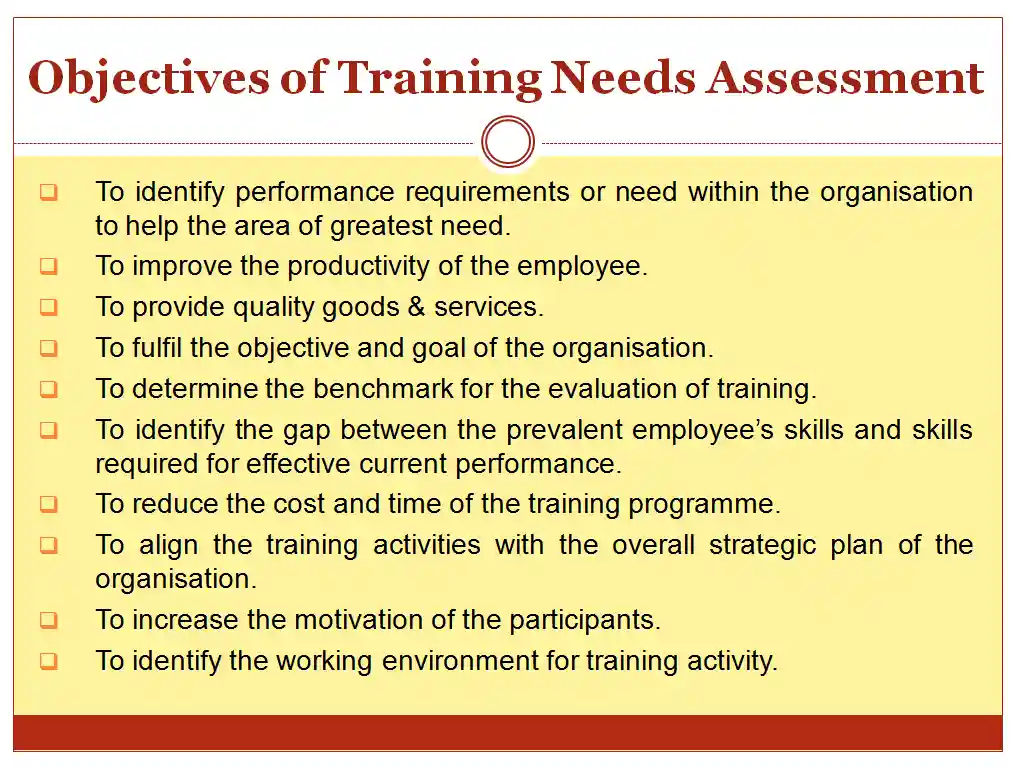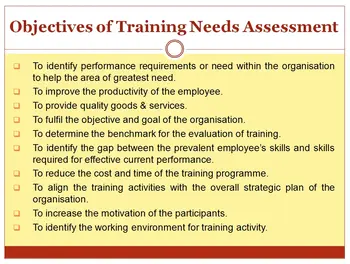Table of Contents:-
- Training Need Assessment Meaning
- Training Need Assessment Definition
- Objectives of Training Needs Assessment –TNA
Training Need Assessment Meaning
A “training needs analysis” or “training need assessment” is a tool utilised to identify what educational courses or activities should be provided to management and employees to improve their management skills and work productivity. The focus should be put on needs as opposed to desires.
For example, a new manager who is having trouble related to his employees would be better served by improving various management skills as opposed to learning further tasks about the technical side of his job, which might be more interesting, but less effective in improving productivity and morale.
Training needs assessment is the systematic method of determining if a training need exists and if it does, what training is required to fill the gap between the standard and the actual performance of the employee.
Training Need Assessment Definition
According to Kaufman et al., “Need assessment can be defined as a process for identifying and prioritising gaps between current and desired results”.
Molenda, Pershing and Reigeluth state, “Need assessment can be defined as a method of finding out the nature and extent of performance problems and how they can be solved”.
According to Allison Rossett, “Training need assessment is the systematic effort that we make to gather opinions and ideas from a variety of sources on performance problems or new systems and technologies”.
Objectives of Training Needs Assessment –TNA
Objectives of identifying training needs assessment are:
1) To identify performance requirements or needs within the organisation to help the area of greatest need.
2) To improve the productivity of the employee.
3) To provide quality goods & services.
4) To fulfil the objective and goal of the organisation.
5) To determine the benchmark for the evaluation of training.
6) To identify the gap between the prevalent employee’s skills and skills required for effective current performance.
7) To reduce the cost and time of the training programme.
8) To align the training activities with the overall strategic plan of the organisation.
9) To increase the motivation of the participants.
10) To identify the working environment for training activity.

You May Also Like:-
Methods of Management Development
Workers Participation in Management
Features of Management Development
Human Resource Development Mechanisms
Process of Human Resource Planning
360 Degree Performance Appraisal
Limitations of Human Resource Planning
Difference between Personnel Management and HRM
